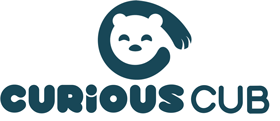Children are in the sensitive period of order and providing them with a shelf in their learning environment helps them build independence. A shelf ensures that there’s a place for everything and everything is in its place.

Benefits of a Montessori Toy Shelf
1. Keeps provocations organized
As opposed to a basket or a box, a shelf makes the provocations visible and your child is more likely going to want to engage with them.
2. Promotes independence
Having a low shelf enables your child to independently access the provocations without having to ask an adult for help. They are free to go to it whenever they desire and work with on their own timeline
3. Provides consistency
Being a heavy piece of furniture, it is unlikely for the shelf to be moved around frequently. Children enjoy consistency and knowing exactly where their things are so that they can find them whenever they need or want something.
4. Encourages clean up
If there are too many things out, clean up seems almost impossible to a child. However, with few things on the shelf, and everything having a space, clean up is not overwhelming and is easy to achieve.
5. Supports the child's sense of order
Children are in the sensitive period for order and a shelf does just that.
6. Gives choice:
Instead of setting one item out for the child, the shelf has several options for the child to choose from. They can choose which one they want to attempt first, how long they want to use it and which ones they don’t want to play with too!
7. Enhances motor skills
Taking things off the shelf and putting them back supports the development of fine motor skills and hand eye coordination
8. Teaches children to respect materials
When children are in charge of taking the materials out and putting them back in their place, they are taught to respect their belongings and take care of them. You will notice how they slowly start to be more careful and try to avoid spills and handle materials with love.
9. Demands creativity and imagination
Due to its simplicity: The shelf offers 6 to 8 materials at a time. The child is required to use their creativity and imagination to play with the same materials in different ways. There is no scope for ‘boredom’ since other choices aren’t available.
Some tips
- Less is more
Set up 6 to 8 activities at a time. If using a cubby style shelf, then set up only one provocation per cubby. This encourages the child to try everything out without feeling overwhelmed and makes clean up easy and possible.
- Rotation
Rotate toys weekly or when your child loses interest. Observe your child and follow their needs. If they are really engaged with one activity, leave it for longer. If something hasn’t been touched all week, replace it and offer it again after a few weeks. If your child has mastered a skill, provide them with a more complex version of the same activity.
- Leave work undone
Provocations like puzzles or shape sorters should be placed on the shelf undone. Place puzzle pieces to the left of the puzzle board. Presenting work from left to right lays the groundwork for literacy - we read and write from the left of the page to the right.
- Trays/Baskets
Use neutral colored wooden trays or cane baskets to store loose parts and pieces. The neutral color helps the loose parts or pieces be the focus instead of distracting the child with what’s on the tray.
- Add a mirror
Above the shelf to promote self discoveries
